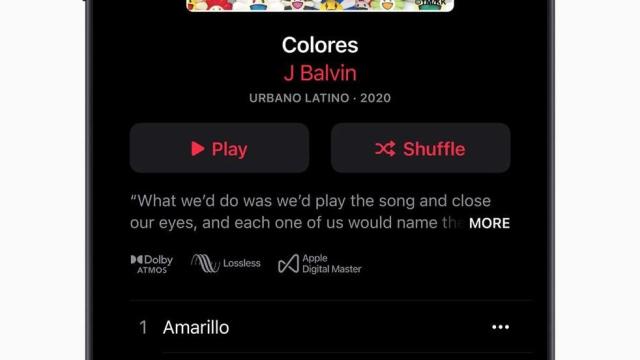I confess, even I got a little excited when I heard that Apple was upping the quality of many of its Apple Music tracks to lossless audio. While that’s not a you-can-listen-now change, as the 75+ million lossless tracks are debuting in June, it’s still something to get excited about. Right? Lossless audio means you “will be able to hear the exact same thing that the artists created in the studio,” as Apple describes.
Spoiler: For most people, it’s not going to matter at all. Don’t use this as the reason to switch to Apple Music; the new spatial audio tracks, Apple Music’s competitive price, or Apple Music’s UI (for everyone but Windows users) are much better reasons. Lossless audio is more of a sounds-great-on-paper upgrade.
Here’s why. For starters, you won’t even be able to experience lossless audio on many of the Apple devices you’re using to listen to Apple Music. I shit you not. Tiny AirPods you cram into your ears? No. AirPods Max, otherwise known as the $US500+ ($900) headphones you purchased for “a perfect balance of exhilarating high-fidelity audio,” as Apple likes to say. Nope. Whether you’re going wireless or wired, you’re not going to be able to get “true” lossless audio. As The Verge’s Chris Welch explains:
“Apple tells The Verge that when you play a 24-bit / 48 kHz Apple Music lossless track from an iPhone into the AirPods Max using both the cable and Lightning dongle, the audio is converted to analogue and then re-digitised to 24-bit / 48 kHz. That re-digitization step is the reason that Apple can’t say you’re hearing pure lossless audio; it’s not an identical match to the source.”
What about your fancy new HomePod speaker? Or the HomePod Mini speakers? No and no. You’ll get to play with spatial audio, sure, but you won’t get lossless audio.
You (probably) won’t even be able to hear the difference
So what, then, is the point? Well, I guess you can grab a pair of analogue headphones, plug them into an external DAC (that supports 24-bit audio at 192kHz), and then you’ll be good to go with an optimal listening setup. But that’s a lot of extra gear for…what, exactly?
Were I you, I’d start by hitting up this handy little online test to see if you can even tell the difference between what you’re getting now from Apple Music (256kbps AAC) and lossless audio. If you can’t, then don’t worry about getting the extra gear you’d need for “Hi Res Lossless,” or the 24-bit-audio at 192kHz that I previously mentioned. Regular, mid-tier “Apple Lossless” audio works fine over normal, analogue headphones, and if it doesn’t sound any different, you probably won’t notice a difference between a better format and it.
Got it?
If this is confusing, or you don’t feel like testing your listening skills, don’t even worry about it. In fact, just take Apple’s word for it; lossless audio isn’t really going to matter to nearly everyone.
I got a lot of crap for saying almost nobody can tell the difference between lossless hi-res and properly encoded lossless tracks.
But Apple’s has this page up claiming the same thing for years:https://t.co/LPbIxoFoIY pic.twitter.com/97olRzjEaP— Jason Cross (@JasonCross00) May 18, 2021

Leave a Reply
You must be logged in to post a comment.